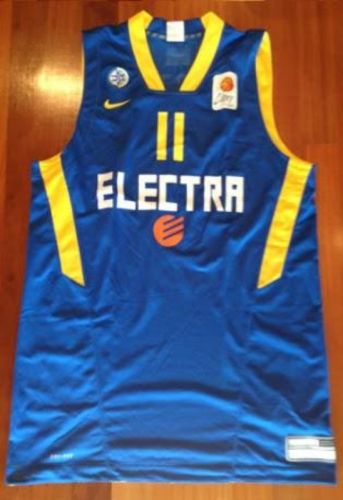Hells Angels: Structure, Membership, And Activities

Table of Contents
The Hierarchical Structure of the Hells Angels
The Hells Angels operate under a hierarchical structure, a complex web of power and influence that spans continents. Understanding this structure is key to understanding the club's operations and reach. The organization is fundamentally decentralized, with a strong emphasis on individual chapters, yet maintains a degree of national and international coordination.
Chapters and Their Roles
The backbone of the Hells Angels is its individual chapters. These chapters possess a significant degree of autonomy, managing their local territories and activities. However, they are ultimately accountable to the larger organization. "Mother Chapters," established earlier and often located in significant urban centers, often exert considerable influence over their affiliated chapters. The geographic distribution of chapters is strategic, reflecting a conscious effort to control territories and resources.
- Key roles within a chapter often include:
- President: The chapter's leader.
- Vice President: Second-in-command.
- Sergeant-at-Arms: Enforcer of club rules.
- Treasurer: Manages the chapter's finances.
- Secretary: Maintains records and correspondence.
National and International Coordination
Despite the decentralized nature of the HAMC, there's evidence of communication and coordination between chapters. This coordination is crucial for managing large-scale events, sharing intelligence, and maintaining a consistent brand identity. While the exact methods remain largely secretive, communication likely involves a mix of in-person meetings, encrypted messaging systems, and established lines of authority. While the Hells Angels project an image of unity, instances of inter-chapter conflict and cooperation have been documented, highlighting the inherent tensions within this complex structure.
Membership and Initiation into the Hells Angels
Becoming a full-fledged member of the Hells Angels, earning the coveted "1%" patch, is a demanding and secretive process. It's a journey that involves rigorous testing, unwavering loyalty, and a commitment to the club's often-ambiguous code.
Prospecting
The first step involves becoming a "prospect," a probationary member who must prove their worthiness. Prospects undergo a period of intense scrutiny and often perform menial tasks for existing members.
- Responsibilities of prospects often include:
- Running errands.
- Maintaining club property.
- Participating in club events.
- Demonstrating unwavering loyalty.
The duration of the prospecting period varies, but it can last for several years, and not all prospects make it to full membership.
Patching In
The "patching in" ceremony represents the culmination of the prospecting process. The bestowal of the official Hells Angels "patch" signifies acceptance into the brotherhood and the full rights and responsibilities of membership. The patch itself carries profound meaning and symbolism, representing the club's identity and heritage. Membership criteria extend beyond motorcycle proficiency and often include factors like criminal history, loyalty, and unwavering commitment to the club's values.
Maintaining Membership
Full-patch members remain subject to the club's strict rules and regulations. Violation of these rules, particularly any actions that damage the club's reputation or jeopardize its interests, can lead to severe consequences, including expulsion or worse. Maintaining membership requires continuous demonstration of loyalty, obedience, and active participation in club activities.
Activities and Legitimate and Illegitimate Business Ventures
The activities of the Hells Angels are multifaceted and complex, encompassing both legitimate and illegitimate ventures. It's crucial to understand this duality to gain a comprehensive understanding of the organization.
Motorcycle Club Activities
The Hells Angels' identity is deeply rooted in its motorcycle club activities. Motorcycle rallies, runs, and social gatherings play a significant role in fostering camaraderie, reinforcing group identity, and projecting an image of power. These events are integral to the club's social and cultural fabric.
- Social and Cultural Significance of Rallies: These events often attract thousands of attendees, showcasing the club's influence and reach.
- Charitable Activities: While largely associated with criminal activities, some chapters have engaged in limited charitable work, though it's crucial to view such actions within the context of their overall activities.
Criminal Activities
It's undeniable that some Hells Angels chapters have been implicated in various criminal activities. These range from drug trafficking and extortion to violence and money laundering. It’s vital to stress that this involvement is not representative of all members or all chapters of the organization, and attributing criminal behavior to the entire group would be a significant oversimplification. Extensive investigations and prosecutions have targeted specific chapters and individuals, highlighting the complexities of definitively linking criminal actions to the entire group. The decentralized nature of the Hells Angels and the secrecy surrounding their operations make it exceptionally challenging to determine the extent of their criminal involvement with certainty.
Conclusion
The Hells Angels Motorcycle Club is a complex organization with a hierarchical structure, a rigorous membership process, and a wide range of activities. While the club cultivates a strong sense of brotherhood through motorcycle-related events and shared experiences, its reputation is undeniably intertwined with criminal activities and a history of violence. This overview provides a basic understanding of the Hells Angels, but it only scratches the surface. Further research into the intricate details of this notorious motorcycle club is encouraged. Understanding the Hells Angels requires a nuanced approach, acknowledging both the social and potentially criminal aspects of this multifaceted organization. Remember to approach any further research with caution and an awareness of the sensitive nature of the subject matter.

Featured Posts
-
 Israeli Premier League Maccabi Tel Aviv Edges Closer To Victory
May 26, 2025
Israeli Premier League Maccabi Tel Aviv Edges Closer To Victory
May 26, 2025 -
 Maccabi Tel Aviv Extends Lead In Israeli Premier League
May 26, 2025
Maccabi Tel Aviv Extends Lead In Israeli Premier League
May 26, 2025 -
 Tour Of Flanders 2024 Pogacars Triumph Over Van Der Poel
May 26, 2025
Tour Of Flanders 2024 Pogacars Triumph Over Van Der Poel
May 26, 2025 -
 Nepo Baby Actress And Gerard Butler A Mother Daughter Emmy Award Connection
May 26, 2025
Nepo Baby Actress And Gerard Butler A Mother Daughter Emmy Award Connection
May 26, 2025 -
 Monaco Gp Fp 1 Results Leclerc Fastest Verstappen Second
May 26, 2025
Monaco Gp Fp 1 Results Leclerc Fastest Verstappen Second
May 26, 2025
